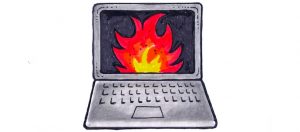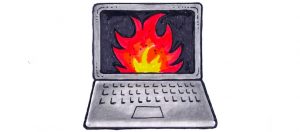
Now 40 years on, I know that the corporate media is still not to be trusted when it comes to covering the nuclear, or any other area of the energy industry.
Editor’s note: In New Mexico, the Church Rock Spill of July 16, 1979 has been called “the worst incident of radiation contamination in the history of the United States.” Catherine Caufield in “Multiple Exposures,” and Harvey Wasserman and Norman Solomon in “Killing Our Own,” reported that when the earthen dam holding radioactive uranium mine tailings burst, it released 93 million gallons of liquid wastes and more than 1,100 tons of solid wastes. “The wall of water backed up sewers and lifted manhole covers in Gallup, 20 miles downstream … and carried toxic metals … at least 70 miles downstream. … it left residues of radioactive uranium, thorium, magnesium, manganese, molybdenum, nickel, selenium, sodium, vanadium, zinc, iron, lead and high concentrations of sulfates.”
*****
By Mark L. Taylor, Special to Nukewatch
Nukewatch Quarterly Summer 2019
In 1978, I was a few years out of college when I stumbled into a job as the editorial cartoonist for The Albuquerque Tribune, which was part of the once legendary Scripps Howard chain of papers. At its founding in 1878 by E.W. Scripps, the company was a feisty force for progressive reform. By the late 1970’s, not so much.
Before loading up the U-Haul and heading off to the southwest an uncle of mine from San Antonio sat me down to make sure I understood just what the newspaper business was all about. Uncle Gary, a former journalist, was a very successful newspaper consultant and broker.
Full of dreams and inspired by the legacy of Scripps Howard’s most famous journalist, World War II combat reporter Ernie Pyle, I was eyeing my new career with a reformer’s heart.
“Yeah, so all that stuff about covering the news and getting to the truth is important, but never forget this,” uncle Gary said. “Bottom line, it is always a business and a business is about making money.”
“Yeah, I know that,” I said aloud, while inside thinking, “But journalism is a different kind of business.”
I settled into my new job with the passion of a religious convert, cranking out editorial cartoons and illustrations, and reading all I could about New Mexico, which one colleague described to me as, “Being as close as you can get to living in the Third World and still be in the United States.”
Where E.W. Scripps had once warned cub reporters about never trusting an editor who belonged to a country club, the corporation now not only provided the editor Ralph Looney with a membership to the most established country club in the city, but also a membership to the swanky Petroleum Club, perched atop one of the city’s tallest bank buildings.
Editor Ralph regularly went to luncheons at the Petroleum Club and would casually mention how he had enjoyed yet another lovely dinner at the club with this or that banker, oil company executive, or big wig with one of the nuclear labs.
No more lingering illusions
On July 16, 1979 any lingering illusions I had about corporate media were sandpapered out of me. Reports were coming in regarding a massive flood of liquid radioactive waste from a breached uranium mine tailings evaporation pond. A “state of the art” earthen dam had collapsed and a veritable avalanche of radioactive sludge, heavy metals, acids and other toxins was roaring down the Little Puerco River (Rio Puerco), right through the heart of the Navajo Nation.
The Rio Puerco is a tributary of the Little Colorado River, which runs to the Colorado River, which feeds Lake Mead—a source of drinking water for Los Angeles.
Initial reports of what came to be known as the Church Rock Spill were fragmentary, but details were coming in about millions of gallons of toxic radioactive liquid waste gushing into the Rio Puerco; a virtual tsunami of nuclear industry poison. There were reports of sheep along the banks dropping dead and people falling ill. But, of course, far out on the “rez’” all of that was “out of sight.”
I was tracking the scraps of information coming across the news wire. A friend at United Press International phoned me tidbits he was hearing. I was worked up about the story but the news editors were coolly dismissive. Of course, if the same thing were happening to the Rio Grande flowing through Albuquerque I had no doubt the news room would have jumped into action.
“You have to understand”
I went to Editor Looney. Surely an old news hound like him could see the importance of what was happening out on the Navajo land. This was a big story, just what newspapers are meant to cover. He knew Navajo elders and artists in Santa Fe, so surely, he would do something.
But Editor Ralph took me into his office and shut the door. A small, portly man, he had to hunch forward on his elbows with his hands clasped before him on the cluttered desktop. He sighed and gazed unblinkingly at me. Then he cleared his throat and said quietly, calmly, “Mark, you have to understand, the nuclear industry built New Mexico. We will not be covering that story.” And, with the exception of a few follow-up wire stories buried in the back end of the paper, we didn’t.
By the time the dam was patched up, between 93 and 100 million gallons had gushed downstream, along with 1,100 tons of radioactive waste, sludge, acids and heavy metals including arsenic, uranium, thorium, radium, polonium, cadmium, and molybdenum. Due to the rugged, remote landscape, much of the clean-up had to be done by crews with shovels, rakes, buckets and wheelbarrows. Pockets of remaining radioactive waste dotted the dry landscape waiting to be moved along in the next downpour or blown about in the wind. Later studies found the toxic brew had seeped as much as 30 feet into the alluvial soils and groundwater. The rate of illness and death went up for those living along the Rio Puerco.
The Navajo Nation Tribal Government asked then governor Bruce King to seek federal assistance to clean up the colossal radioactive mess. King rejected the request. Again, the Albuquerque Tribune had other stories to cover.
Three years after the disaster, United Nuclear Corporation closed up operations and walked away. Now 40 years on, I know that the corporate media is still not to be trusted when it comes to covering the nuclear, or any other area of the energy industry.
As E.W. Scripps once wrote:
“The press of this country is now and always has been so thoroughly dominated by the wealthy few of the country that it cannot be depended upon to give the great mass of the people the correct information concerning political, economic, and social subjects which it is necessary that the mass of people shall have, in order that they shall vote and in all ways act in the best way to protect themselves from the brutal force and chicanery of the ruling and employing class.”
But that was a long time ago.
(Mark L. Taylor is editor of The Commoner Call.)
- Radiation’s & Colonialism’s Permanent Stamp On New Mexico — As an indigenous person whose ancestral connections to the land are rooted in the occupied territories of “New Mexico,” and as an anti-nuclear activist, the connection between the marginalization and oppression of people of color in this state and the incidence of widespread radioactive contamination is unmistakable. … Link to Story

